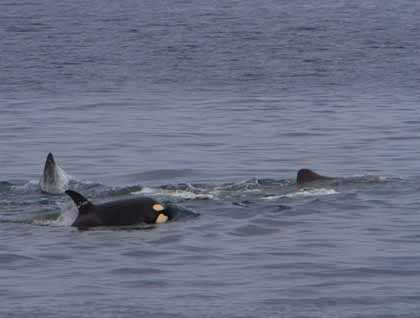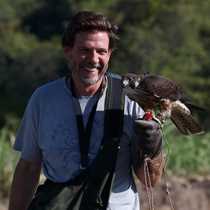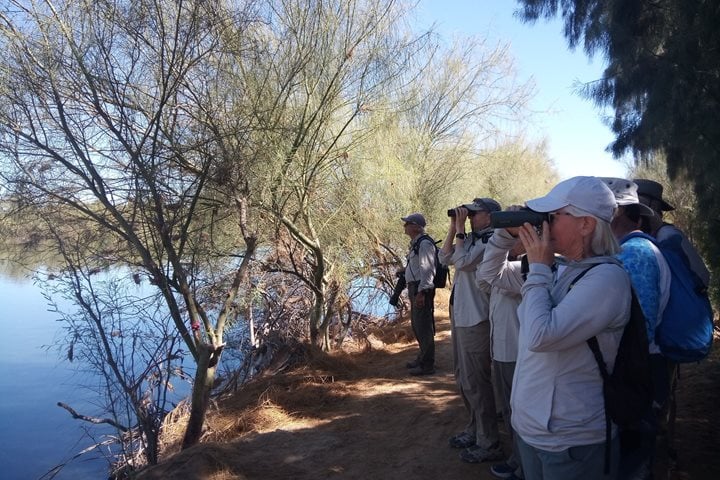We had an early start today as we embarked our Zodiacs to cruise around San Pedro Martir. This island is the most remote in the Gulf of California, and it is located halfway between Baja California and Sonora. San Pedro Martir is a Biosphere Reserve on its own, and it is a sanctuary to the largest colony of blue-footed boobies in the world. Brown boobies, brown pelicans, red-billed tropicbirds, and California sea lions breed here as well.
The steep rocky walls have evidence of the old mining days of the late 1800’s, when people from the mainland were virtually enslaved to collect the abundant guano from the island. While circumnavigating the island through glassy calm waters, sea lions played around our wake. We could also take good looks at the brown booby chicks that blend with their white down on the whitewashed background.
As we left San Pedro Martir behind, we headed into the flat-calm waters of the Gulf. After some time spent looking and looking for marine creatures, we were surprised by our finding. At least two orca in the distance that splashed around, apparently very near some other bigger whales. The closer we got, the more adrenaline flowed on the bow as we watched in awe, a group of sperm whales forming a rosette, tails facing outward and heads together, as they seemed to protect their young from the killer whales’ attack. Out of nowhere, a massive male sperm whale rushed into the scenario, violently splashing with its huge flukes. The orca did not stay for very long after the male leviathan showed up. After all the commotion, we could see a very new sperm whale calf, which was apparently safe and intact after the orca’s attempt to attack.
While we were still admiring the mysterious giants, short-finned pilot whales came onto the scene! Along with them a few bottlenose dolphins splashed around as well. We were blown away by the toothed whale assortment that we had in front of our eyes! The pilot whales leapt in the air many times, and surfaced right under our bow repeatedly. We stayed with the sperm whales and the pilot whales for hours, as we all considered ourselves extremely privileged to be able to witness nature like today. For many of us, this trip has broken a record on the number of cetaceans seen in a single voyage. Eleven cetacean species so far and the expedition is not over yet!







